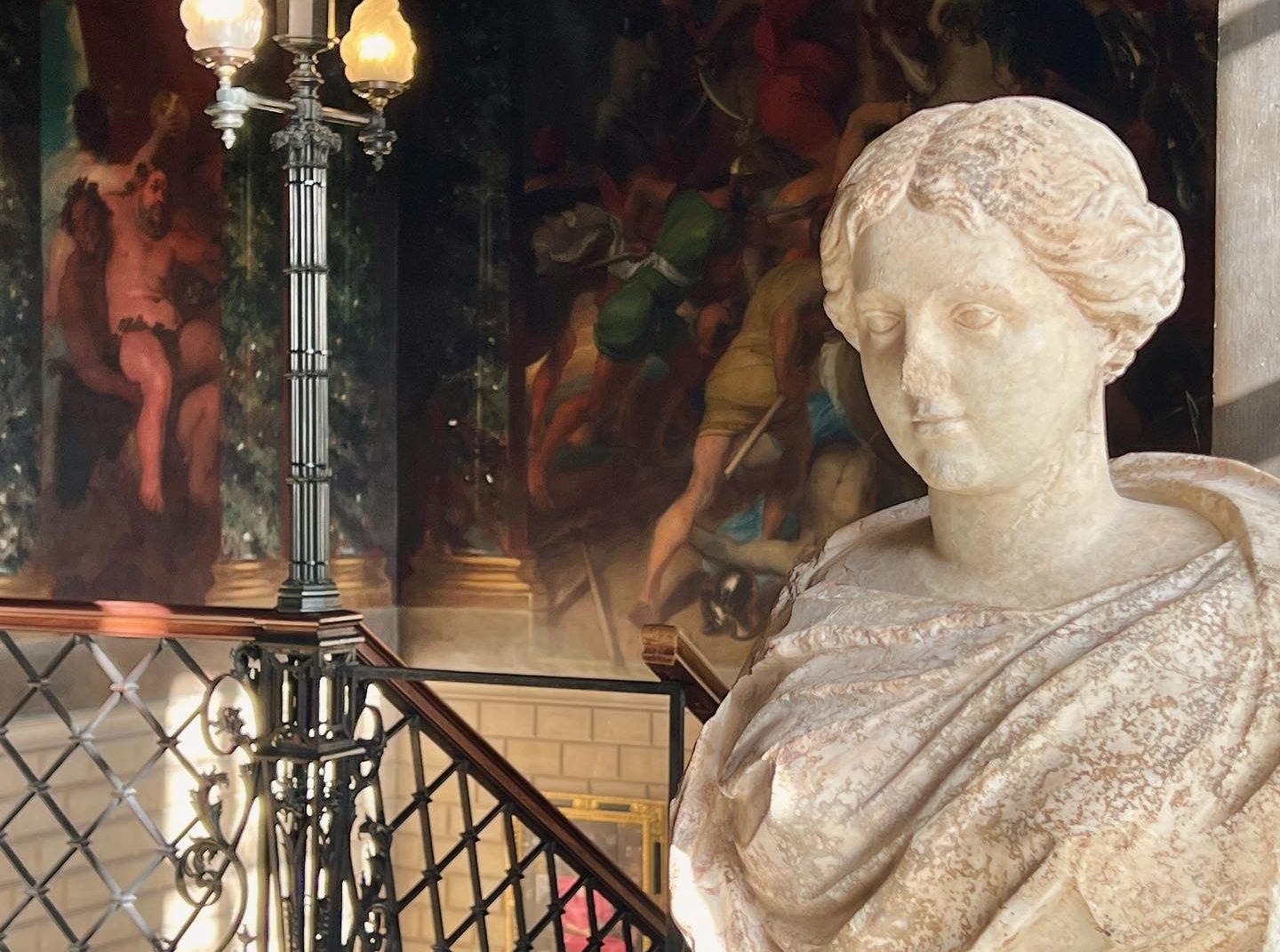
A mysterious, 1,800-year-old Roman bust was discovered during the construction of a new car park at Burghley House, near Stamford, the U.K.
Burghley is one of the last remaining examples of great Elizabethan houses of the 16th century, built between 1555 and 1587. Known as a “prodigy house”—a grand residence built to reflect its owners’ wealth or status—it was established for Sir William Cecil, Lord High Treasurer to Queen Elizabeth I, to encompass 35 major rooms designed to reflect Elizabethan architecture. About a hundred artworks, including an altarpiece by Paolo Veronese and royal portraits, are dotted throughout the residence. Today, the house is maintained by the Burghley House Preservation Trust.
Digger operator Greg Crawley with the excavated Roman bust. Photo courtesy of Burghley House.
While hard at work operating heavy machinery at the site, excavator operator Greg Crawley spied a face on an object he had earlier mistaken for a pale stone. Remarkably, he had unearthed a marble head, which experts date to the 1st or 2nd century.
“When I picked it up, I realized it was a head of a statue. I couldn’t believe it when they told me it was a Roman marble statue,” said Crawley in a statement. “It was an amazing feeling to have found something so old and special–definitely my best-ever discovery.”
The Roman bust uncovered at the car park at Burghley House. Photo courtesy of Burghley House.
Experts discovered an iron dowel in the marble head, likely added in the 18th century, suggesting an adaptation by Italian dealers to enhance the statue’s appeal during the Grand Tour.
A cultural rite of passage for European aristocrats in the 17th to 19th centuries, the Grand Tour involved traveling through Europe to study classical art, architecture, and culture. Italy was a focal point for the elite, who visited cities like Rome, Florence, and Venice to explore renowned museums and archaeological sites, and interact with prominent artists and intellectuals. Travelers often returned home with acquired art and antiquities. Burghley House speculates that the ninth Earl of Exeter, who frequented Italy in the 1760s, may have acquired the sculpture along his tour.
The Roman bust being reassembled. Photo courtesy of Burghley House.
The mystery deepens as to how the Roman artifacts ended up buried in the park, with theories ranging from a burglary-gone-wrong to casual discarding. According to the New York Times, researchers have not uncovered any historical reports of a theft from the house. Though, as Burghley House curator Jon Culverhouse, told the paper, “there probably wouldn’t be, because the owner would be very embarrassed.”
The Roman bust on display at Burghley House. Photo courtesy of Burghley House.
While it remains unknown how long they had been buried, the artifacts have been reassembled by a specialist conservator and will join other sculptures purchased by the ninth Earl on display at Burghley House from March 16.
“The house has always revealed secrets,” Culverhouse added. “But nothing as romantic as this.”